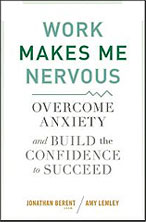Back to School Creates Challenges for Children with Selective Mutism & Social Anxiety
The carefree days of summer are coming to an end. Outings to the beach, unlimited time with video games, and no homework are much easier to deal with than issues such as a child’s social anxiety, inhibited verbal communication, or social avoidance.
Summer is a time that can enable parents’ denial regarding the insidious and complex problems driven by social anxiety as the performance pressure is off. Jonathan Berent, L.C.S.W., author of “Beyond Shyness: How to Conquer Social Anxieties” states, “the most common response I’ve heard during my 36 years of clinical practice is “don’t worry the child is just shy. He or she will grow out of it”. This point of view comes from teachers, mental health professionals, pediatricians, as well as parents and well intentioned friends. The result of this belief has been a tremendous international void of productive treatment for social anxiety sufferers of all ages. The mental health profession has basically been clueless.
This void of treatment efficacy was the driving force for the creation of Social Anxiety: The Untold Story. This training program for mental health professionals was produced by The Andrew Kukes Foundation for Social Anxiety. Continuing education credits are available for mental health professionals.
Berent adds “the average age of the thousands of individuals who have been in treatment with me since 1978 has been the late 20’s”. The problem accrues with time. Social anxiety becomes very ingrained as fear of embarrassment, humiliation, and shame create avoidant behavior, and often, an overwhelmingly painful mind-body response.
Selective Mutism is an example of extreme social phobia at an early age. In essence, it is a talking phobia. The problem presents as a pattern of the child not talking in numerous situations. In typical selective mutism the child does talk normally at home, but not where there is performance pressure. There are many examples of atypical selective mutism. Selective mutism specifically is a manifestation of obsessive compulsive disorder. Berent adds. “I have worked with many adults who have variations of selective mutism. In fact; selective mutism can be the cause of public speaking anxiety disorder in adults”.
The Silver Lining of Selective Mutism
While selective mutism is a daunting challenge for parents, professionals, and schools, there is an upside. According to Berent, “the earlier there is productive intervention the more potential there is to prevent the problem from evolving into avoidant and dependent personality disorder. Selective mutism is a behavior that is very observable at an early age. The Berent Method of Treatment for selective mutism is parent -focused. Parents learn how to empower their children via non-enabling strategies while teaching emotional intelligence. The Berent Method has been designed to adapt therapy to the specific needs of the problem vs. attempting to fit the problem into the narrow confines of a specific therapeutic modality.
To access a free library of clinical interview with real patients and parents who have participated in The Berent Method click here.
Self-Help and Treatment Options
- Free Audio CD from Social-Anxiety.com
- Social Anxiety: The Untold Story
- Beyond Shyness: How To Conquer Social Anxieties
- Work Makes Me Nervous
- Comprehensive Self-Therapy Audio Program
- Public Speaking Anxiety Self-Therapy Audio Program
- “Warm Hands Cool Face” A Self-Help Clinical Program for Blushing Anxiety & Erythrophobia
- The Berent Method: High Performance Therapy for Social-Anxiety
- Telephone/skype therapy available worldwide
- Selective Mutism Seminar Audio CD/MP3 Program
- Self-Help Program for Parents of Children with Selective Mutism
- The Sociability Questionnaire
- Tip of the Month Club
- Social Therapy and The Learning Disabled
- Free Parent Addiction Survey


